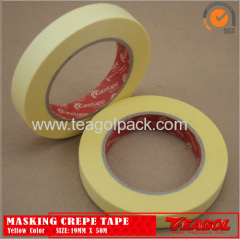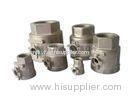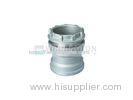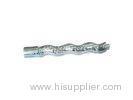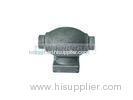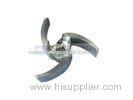|
Winnington Casting CO.,LTD.
|
precision investment casting process steel investment casting
| Place of Origin: | Zhejiang, China (Mainland) |
|
|
|
| Add to My Favorites | |
| HiSupplier Escrow |
Product Detail
Duplex Alloy Steel Investment Casting , Impeller Precision Lost Wax Process</st
Duplex Alloy Steel Investment Casting , Impeller Precision Lost Wax Process
Quick Detail:
1. Duplex alloy steel casting part of an impeller cast by lost wax process;
2. Material: Duplex CD4MCu alloy steel;
3. Max size: 500X500X350mm;
4. Weight: 0.8kg;
5. Chemical composition tested by German spectrometer;
6. PED and ISO9001:2008 certificated;
7. NDT test can be operated.
Winnington Casting has experience pouring a wide variety of stainless steel alloy casts. The most common alloys we have poured are listed below.
|
Stainless Steel (70%) |
Carbon Steel |
Alloy Steel |
|
CF3M (AISI 316L), CF8M (AISI 316), CF8 (AISI 304), CD4MCuN, CD4MCu, ANC20,1.4408,1.4517, 1.4306, 303, 430, 420, 17-4PH, SCS1 and more |
SCS16, SCS14, SCS13, 1.0619, WCB, S355JR, 1045 , LCC and more |
ANC2,CLA12C,42CrMo,8Q,4140,6150 and more |
Description:
All kinds of stainless steel, carbon steel and most of alloy steel casting needs, Winnington Investment Casting can help you out.
Process of investment casting:
- Wax die making: Our wax tooling is made of Aluminum which is easy for machining and fast for cooling, at the same time, light for handling.
- Wax injection: Filling the entire mould with molten wax, and let it cool, until a desired wax pattern is shaped and harden.
- Assemble the wax patterns: The wax patterns are welded to a runner system by a heated metal tool according to a certain pattern cluster(tree) design.
- Investment: The ceramic mould, known as the investment, is produced by three repeating steps: coating, stuccoing, and hardening. The first step involves dipping the cluster into a slurry of fine refractory material and then letting any excess drain off, so a uniform surface is produced. This fine material is used first to give a smooth surface finish and reproduce fine details. In the second step, the cluster is stuccoed with a coarse ceramic particle, by dipping it into a fluidised barrel, placing it in a rainfall-sander. Finally, the coating is allowed to harden.
- Dewax: The investment is then allowed to completely dry, which can take 16 to 48 hours. It is then turned upside-down and placed in a autoclave to melt out and/or vaporize the wax.
- Burnout & preheating: The mold is then subjected to a burnout, which heats the mold to remove any moisture and residual wax, and to sinter the mold. The mold is preheated to allow the metal to stay liquid longer to fill any details and to increase dimensional accuracy.
- Pouring: The investment mold is then placed cup-upwards into a tub filled with sand and be poured.
- After treatment: The shell is then hammered, media blasted, vibrated, waterjeted, or chemically dissolved to release the casting. Further actions like weld repairing,grinding, shot blasting,CNC machining, electro plating will be taken to get a final cleaned precision casting part.
Applications:
Pumps
Chemical fluid control
Specifications:
|
Standards |
ASTM,JIS,DIN,BS,MIL |
|
Maximum Casting Size |
500*500*350mm |
|
Casting weight |
10g~80kg |
|
Wall thickness |
1.5-2mm Min |
|
Casting process type |
silica sol lost wax casting |
|
Secondary Machining |
CNC machining,CNC lathe |
|
Surface finish |
electro polish,satin,hand polished,pickled,zinc plating |
|
Tolerances |
VDG P690 |
Competitive Advantage:
Winntington has strong technical support and full range of casting facilities and testing instruments to cater the growing investment casting business.
Investment casting is an industrial process based on and also called lost-wax casting, one of the oldest known metal-forming techniques.The castings allow the production of components with accuracy, repeatability, versatility and integrity in a variety of metals and high-performance alloys.
Investment casting is generally more expensive per unit than die casting or sand casting, but has lower equipment costs. It can produce complicated shapes that would be difficult or impossible with die casting, yet like that process, it requires little surface finishing and only minor machining.








